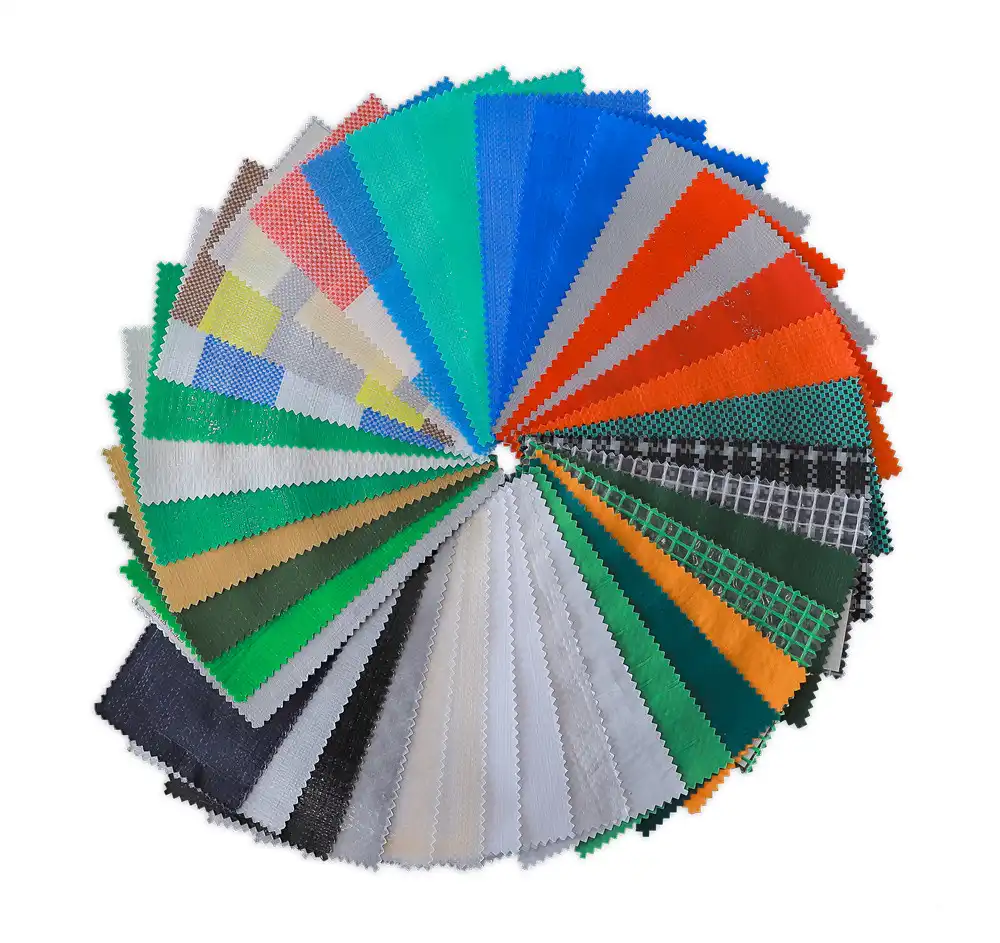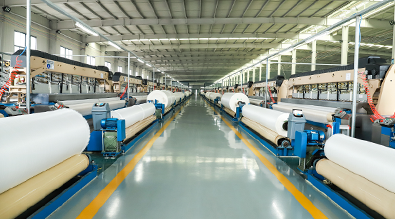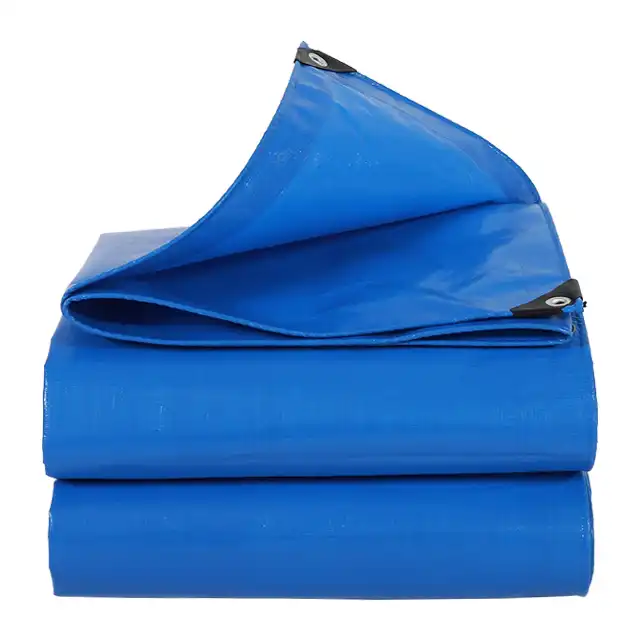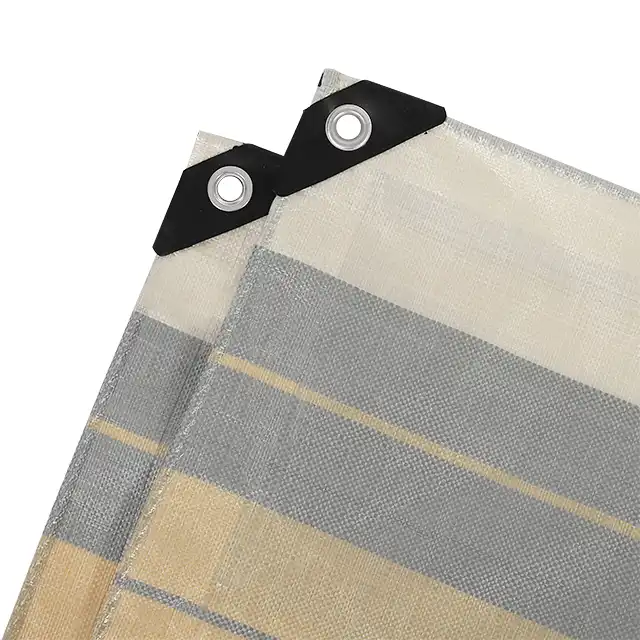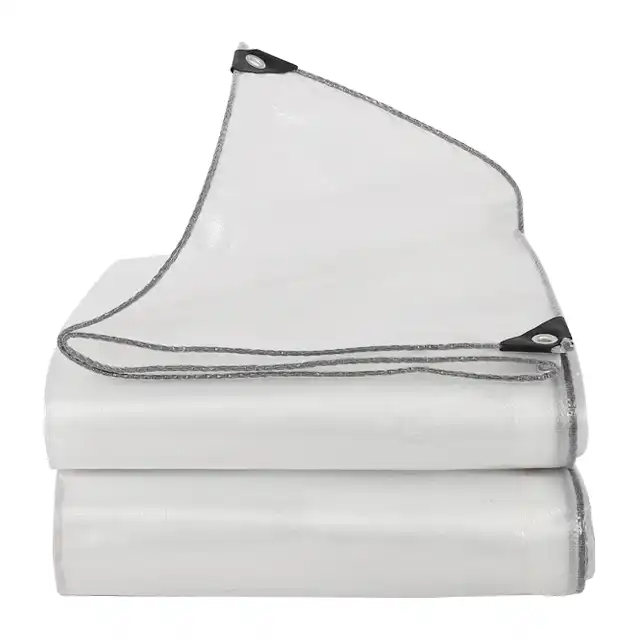How to Dispose of Used Tarpaulins Responsibly?
In today's environmentally conscious world, the responsible disposal of industrial materials has become a critical concern for businesses and individuals alike. Used tarpaulins, which serve essential functions across various industries from construction to agriculture, present unique disposal challenges due to their durable polyethylene composition and widespread applications. These versatile protective covers, commonly used for truck canopies, ship covers, cargo storage, outdoor shelters, and agricultural purposes, eventually reach the end of their service life and require proper handling to minimize environmental impact. Understanding the correct disposal methods for used tarpaulins not only demonstrates environmental responsibility but also helps companies maintain sustainable business practices while potentially recovering value from their discarded materials.
Understanding Tarpaulin Materials and Environmental Impact
Polyethylene Composition and Environmental Considerations
 Used tarpaulins manufactured from high-quality polyethylene (PE) materials present specific environmental challenges when disposed of improperly. The polyethylene composition, typically ranging from 600D to 1800D denier with GSM weights between 75-400, makes these materials highly durable but also slow to decompose in natural environments. Modern PE tarpaulins from established manufacturers like Linyi Shengde Plastic Co., Ltd. incorporate UV treatment and LDPE lamination on both sides, enhancing their longevity but also complicating biodegradation processes. The manufacturing process involves sophisticated wire drawing lines, water-jet looms with widths up to 4.25 meters, and specialized coating machines that create products with exceptional tear resistance and waterproof capabilities. When used tarpaulins reach their end-of-life phase, understanding their material composition becomes crucial for selecting appropriate disposal methods that minimize environmental harm while maximizing resource recovery potential.
Used tarpaulins manufactured from high-quality polyethylene (PE) materials present specific environmental challenges when disposed of improperly. The polyethylene composition, typically ranging from 600D to 1800D denier with GSM weights between 75-400, makes these materials highly durable but also slow to decompose in natural environments. Modern PE tarpaulins from established manufacturers like Linyi Shengde Plastic Co., Ltd. incorporate UV treatment and LDPE lamination on both sides, enhancing their longevity but also complicating biodegradation processes. The manufacturing process involves sophisticated wire drawing lines, water-jet looms with widths up to 4.25 meters, and specialized coating machines that create products with exceptional tear resistance and waterproof capabilities. When used tarpaulins reach their end-of-life phase, understanding their material composition becomes crucial for selecting appropriate disposal methods that minimize environmental harm while maximizing resource recovery potential.
Lifecycle Assessment of Industrial Tarpaulins
The environmental footprint of used tarpaulins extends beyond their disposal phase, encompassing their entire lifecycle from production through multiple use phases. Quality manufacturers implement comprehensive quality monitoring systems throughout production, ensuring that tarpaulins maintain their protective properties for extended periods. ISO 9001:2015 certified facilities demonstrate commitment to producing durable products that serve longer before requiring disposal, thereby reducing the frequency of replacement and associated environmental impact. Used tarpaulins from leading enterprises often retain significant structural integrity even after years of service in demanding applications such as construction site enclosures, agricultural greenhouse covers, and transportation cargo protection. The advanced research and development capabilities of modern manufacturers have resulted in innovations like fire prevention functions, enhanced waterproof capabilities, and ultra-wide width options up to 5 meters, all contributing to extended product lifespans and reduced disposal frequency.
Material Recovery Potential and Resource Efficiency
The high-quality polyethylene used in professional-grade tarpaulins retains considerable value even when classified as used tarpaulins. Advanced manufacturing processes involving multiple coating applications and specialized treatments create materials with properties that remain viable for secondary applications or recycling processes. The mesh specifications ranging from 6x6 to 16x16, combined with sophisticated surface treatments, result in materials that can be processed through various recovery methods. Understanding the specific characteristics of used tarpaulins helps facilities develop targeted recovery strategies that extract maximum value from discarded materials. Companies with strong research and development capabilities continue innovating in material recovery technologies, developing methods to separate and process different components of used tarpaulins for reuse in new applications or as raw materials for alternative products.
Recycling and Repurposing Strategies
Industrial Recycling Processes for PE Materials
Professional recycling of used tarpaulins involves sophisticated processes designed to break down polyethylene materials into reusable components. Specialized recycling facilities employ mechanical processing techniques that can handle the complex laminated structures typical of high-quality tarpaulins. The process begins with thorough cleaning to remove contaminants, followed by shredding operations that reduce used tarpaulins into manageable pieces suitable for further processing. Advanced sorting technologies separate different material grades and remove metal components such as grommets and reinforcement elements. The resulting polyethylene fragments undergo melting and pelletization processes that transform waste materials into raw plastic pellets suitable for manufacturing new products. Leading manufacturers in the tarpaulin industry increasingly recognize the value of establishing relationships with certified recycling facilities to ensure their products maintain environmental responsibility throughout their complete lifecycle.
Creative Repurposing Applications for Extended Utility
Before considering disposal, used tarpaulins often retain sufficient integrity for repurposing in less demanding applications. The inherent durability and waterproof characteristics that make these materials valuable for original applications like truck covers and cargo protection translate well to secondary uses. Agricultural operations frequently repurpose used tarpaulins as ground covers, compost bin liners, or temporary shelter materials for equipment storage. Construction sites utilize structurally sound used tarpaulins for dust control barriers, equipment covers, or temporary roof repairs. The UV treatment and tear-resistant properties engineered into quality tarpaulins during manufacturing ensure that repurposed materials continue providing protection and utility. Creative repurposing extends the useful life of used tarpaulins while delaying their entry into waste streams, maximizing the return on initial investment while supporting sustainable resource management practices.
Commercial Markets for Secondary Tarpaulin Materials
Emerging markets for used tarpaulins create economic incentives for responsible disposal practices while supporting circular economy principles. Specialty dealers purchase structurally sound used tarpaulins for resale to customers requiring temporary or budget-conscious protection solutions. These markets particularly value materials from reputable manufacturers known for quality construction and durable materials that maintain performance characteristics even after extended use. The standardized sizing options available from professional manufacturers, ranging from custom dimensions to ultra-wide widths up to 40 meters, help facilitate secondary market transactions by providing predictable specifications. Agricultural cooperatives, disaster relief organizations, and temporary event coordinators represent significant demand sources for quality used tarpaulins that no longer meet primary application requirements but retain sufficient functionality for less critical applications.
Professional Disposal and Waste Management Solutions
Certified Waste Management Partnership Programs
Establishing relationships with certified waste management companies ensures that used tarpaulins receive appropriate processing according to environmental regulations and industry best practices. Professional waste management firms specializing in industrial materials possess the equipment and expertise necessary to handle large volumes of used tarpaulins safely and efficiently. These partnerships become particularly valuable for organizations managing substantial quantities of tarpaulin materials, such as logistics companies, construction firms, or agricultural operations that regularly replace protective coverings. Certified facilities maintain proper documentation of disposal processes, providing clients with verification of responsible handling that supports corporate sustainability reporting requirements. Leading tarpaulin manufacturers often recommend specific waste management partners familiar with their products' material composition and optimal processing methods, ensuring that used tarpaulins receive appropriate treatment throughout the disposal process.
Regulatory Compliance and Documentation Requirements
Proper disposal of used tarpaulins involves compliance with various environmental regulations that govern industrial waste management practices. Different jurisdictions maintain specific requirements for polyethylene waste disposal, particularly for materials used in commercial and industrial applications. Documentation requirements typically include manifest systems that track materials from generation through final disposition, ensuring accountability throughout the disposal chain. Companies must maintain records demonstrating compliance with applicable regulations while supporting their environmental stewardship commitments. Understanding regulatory frameworks helps organizations develop internal policies that ensure used tarpaulins receive appropriate handling while minimizing legal liability and supporting corporate sustainability objectives. Professional waste management providers assist clients in navigating complex regulatory requirements while ensuring that disposal practices meet or exceed applicable standards.
Cost-Effective Disposal Solutions and Volume Management
Efficient management of used tarpaulins requires strategic planning that balances cost considerations with environmental responsibility. Large-scale operations benefit from consolidated disposal programs that process materials in bulk, reducing per-unit handling costs while ensuring consistent treatment standards. Timing disposal activities to coincide with regular waste collection schedules maximizes efficiency while minimizing special handling requirements. Organizations can reduce disposal costs by implementing material segregation practices that separate used tarpaulins from other waste streams, enabling specialized processing that may recover additional value. Professional disposal services often provide volume-based pricing structures that reward consistent partnerships and predictable material streams. Understanding the total cost of ownership for tarpaulin materials, including disposal expenses, helps organizations make informed purchasing decisions that consider environmental impact alongside initial acquisition costs.
Conclusion
Responsible disposal of used tarpaulins requires comprehensive understanding of material properties, available processing options, and regulatory requirements that govern industrial waste management. The durable polyethylene construction that makes quality tarpaulins valuable for protecting goods and equipment also creates opportunities for material recovery and repurposing applications. Professional disposal strategies maximize resource recovery while minimizing environmental impact, supporting sustainable business practices and regulatory compliance.
As a leading China used tarpaulins factory with over 20 years of manufacturing excellence, Linyi Shengde Plastic Co., Ltd. recognizes the importance of supporting customers throughout the complete product lifecycle, including responsible disposal guidance. Our position as a premier China used tarpaulins supplier stems from our commitment to quality products that maintain performance characteristics for extended periods, reducing replacement frequency and disposal requirements. As an established China used tarpaulins manufacturer with ISO 9001:2015 certification and partnerships with international organizations including UNHCR, IOM, ICRC, and UNICEF, we understand the global importance of environmental stewardship. Whether you're seeking used tarpaulins for sale for secondary applications or require guidance on responsible disposal practices, our expertise as a China used tarpaulins wholesale provider extends beyond initial sales to comprehensive customer support. Contact our knowledgeable team to discuss competitive used tarpaulins price options and professional disposal recommendations that support your sustainability objectives. Reach out to us at info@shengdetarp.com to explore how our experience and commitment to quality can support your tarpaulin needs while maintaining environmental responsibility.
References
1. Thompson, R.C., Moore, C.J., vom Saal, F.S., & Swan, S.H. (2009). Plastics, the environment and human health: current consensus and future trends. Environmental Research, 109(6), 692-705.
2. Zhang, L., Wang, H., & Chen, M. (2018). Lifecycle assessment of polyethylene tarpaulin materials in industrial applications. Journal of Cleaner Production, 186, 847-856.
3. Johnson, K., Brown, A., & Davis, P. (2020). Sustainable waste management practices for synthetic textile materials in commercial environments. Waste Management Research, 38(4), 415-428.
4. Rodriguez, M., Kim, S., & Patel, N. (2019). Recycling technologies for laminated polyethylene products: challenges and opportunities. Resources, Conservation and Recycling, 143, 89-98.
